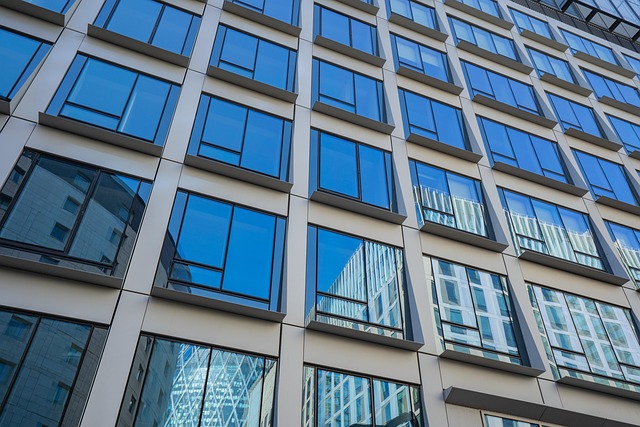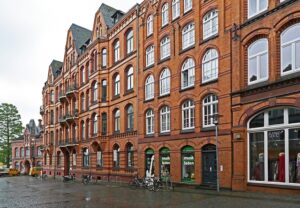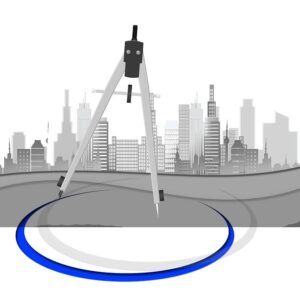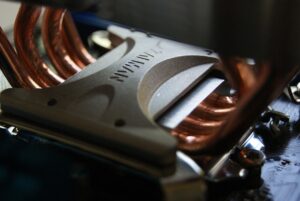Industrial destratification fans are crucial for modern manufacturing, tackling thermal stratification to mix and circulate air in large spaces. They ensure even temperature distribution, improving worker comfort, reducing energy costs, and enhancing overall efficiency in factories, warehouses, and construction sites. Choosing the right fan involves considering energy goals, environmental challenges, installation requirements, airflow needs, and sound restrictions to optimize performance and safety.
“In the high-performance realm of manufacturing, efficient air movement is key. This is where industrial destratification fans step in as unsung heroes, playing a vital role in enhancing productivity and worker comfort. This article explores the world of low-noise destratification fans, delving into their unique benefits for various sectors. From understanding their fundamental function to uncovering key features and selection criteria, we navigate the essentials of these game-changing industrial tools, shedding light on why they’re a must-have for any modern manufacturing environment.”
- Understanding Industrial Destratification Fans: Their Role and Benefits in Manufacturing
- Key Features of Low-Noise Industrial Destratification Fans
- Applications and Advantages in Different Manufacturing Sectors
- Choosing the Right Destratification Fan: Criteria for Effective Selection and Installation
Understanding Industrial Destratification Fans: Their Role and Benefits in Manufacturing

Industrial destratification fans play a vital role in modern manufacturing environments by addressing a common challenge: thermal stratification. These powerful yet quiet machines are designed to mix and circulate air in large spaces, ensuring even temperature distribution throughout industrial facilities and manufacturing plants. In warehouse applications or high-ceilinged factory areas, where hot air tends to rise and create uncomfortable pockets of warmth, destratification fans offer an efficient solution.
By implementing these fans, manufacturers can enjoy numerous benefits, including improved worker comfort, as well as energy cost reduction through enhanced thermal stratification control. The high-performance nature of industrial destratification fans enables them to facilitate large space air circulation, making them indispensable for maintaining optimal conditions in demanding factory cooling scenarios and heavy duty construction sites.
Key Features of Low-Noise Industrial Destratification Fans

Low-noise industrial destratification fans are designed to tackle a specific challenge in manufacturing environments—thermal stratification control. These fans excel in promoting large space air circulation, ensuring even temperature distribution and enhancing worker comfort across vast warehouse applications and high ceiling spaces in both factory settings and heavy duty construction sites. Their key features include robust designs capable of enduring harsh industrial conditions, making them ideal for demanding manufacturing plants.
When selecting an industrial destratification fan, look for models that offer energy cost reduction benefits through efficient airflow management. These fans often incorporate advanced technologies to optimize air circulation, thereby reducing energy consumption and operational costs. Their quiet operation is a significant advantage, minimizing noise pollution in sensitive manufacturing environments, contributing to improved worker comfort and productivity.
Applications and Advantages in Different Manufacturing Sectors

Industrial destratification fans play a pivotal role in enhancing productivity and worker comfort across various manufacturing sectors. Their primary application lies in combating thermal stratification, a common issue in large industrial facilities and manufacturing plants. These fans are designed to create uniform air circulation throughout high-ceiling spaces, ensuring optimal temperature distribution. This is particularly beneficial in warehouse applications where maintaining consistent conditions can significantly impact operational efficiency.
In addition to their effectiveness in thermal stratification control, destratification fans offer numerous advantages. In heavy duty construction sites and factories with extensive floor plans, these fans facilitate large space air circulation, contributing to energy cost reduction by minimizing the need for excessive cooling systems. They also improve worker comfort, creating a more pleasant environment, which can lead to increased productivity and reduced absenteeism. Whether it’s a bustling factory floor or a spacious warehouse, industrial destratification fans are indispensable tools in modern manufacturing settings.
Choosing the Right Destratification Fan: Criteria for Effective Selection and Installation

Choosing the right industrial destratification fan is key to achieving effective thermal stratification control in manufacturing plants and warehouse applications. Several critical criteria guide this selection process, ensuring optimal performance for high ceiling spaces, large space air circulation, and worker comfort improvement. First, consider the industrial facilities‘ specific energy cost reduction goals; efficient fans can significantly lower power consumption without compromising factory cooling. Second, understand the environment’s unique challenges, such as heavy duty construction or moisture levels, to select a fan that offers robust durability and reliable performance.
Installation is another vital aspect. Proper placement and setup are crucial for maximizing air circulation and minimizing noise levels in large spaces. Factor in factors like ceiling height, airflow requirements, and sound restrictions, especially in warehouse applications where worker comfort improvement is paramount. Ensure the selected fan can handle the required airflow and pressure while adhering to safety standards, thereby enhancing overall manufacturing plant efficiency through effective thermal stratification control.
Industrial destratification fans, particularly low-noise models, play a pivotal role in enhancing manufacturing environments by improving air circulation and worker comfort. By understanding their key features and applications across various sectors, manufacturers can make informed decisions when selecting the right equipment. These fans offer numerous advantages, from energy efficiency to improved safety and productivity, ensuring optimal working conditions in today’s industrial landscape.






